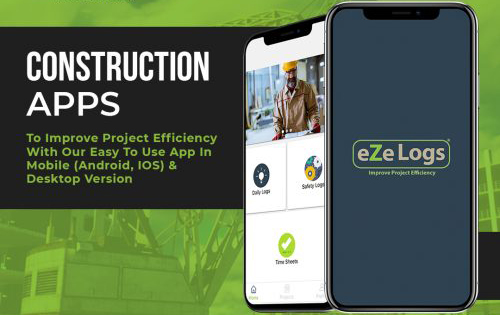Submittals And Rfi may operate smoothly and to the client’s satisfaction with well-defined roles and responsibilities between the architect and design team, and the contractors on the site.
This article defines submittals for dummie, lists the components that should be included in a submittal, and discusses potential submittal approval processes.
What A Construction Submittals And Rfi Is For
Submittal assembly is the most time-consuming aspect of any building project. In certain cases, hundreds of proposals may be submitted for a single project. However, they might number in the hundreds or thousands for large construction projects.
They Provide The Groundwork For Cooperation Amongst All Teams
Working with the project owner, architects, engineers, and designers, begin conceptualising the building’s appearance and developing the requirements included in the request for submittals, reasonable construction submittals software like Ezelogs. The contractor then works with its subcontractors and suppliers to compile the submittal’s data and suggested products.
So, in Submittals And Rfi process, As the submitted materials proceed through the required stages of inspection, clarification, and approval, lines of communication open up between the two groups. This ensures everyone is on the same page before the first person steps foot on the ground.

Selections And Specifications Help Maintain Product Quality
The first phase of quality control is the Rfi submittals procedure. That is because all that scrutiny is aimed at preventing sloppy work that may weaken the building and need costly repairs down the line. In this submittals and rfi context, contractors are crucial players. They decide on the materials to utilise as a group to realise the project’s vision. Considerations in making these selections may include the items or materials’ longevity, resistance to wear and tear, ease of repair, cost, and other factors.
Before Construction Starts, They Air Any Differences, Worries, And Queries
This humbling phase might act as a double-check on each party’s power. If the purpose of the Submittals And Rfi is to demonstrate the general contractor’s compliance with the project specifications, then any design discrepancies or communication breakdowns should become apparent at this stage. The problem may be a misunderstanding of a demand or a misinterpretation of the offered information.
Or it might be something more serious, like a major design flaw that needs fixing before the contractor can submit the necessary paperwork. An exchange of views is to be expected. This phase aims to find inconsistencies and work out details so that problems don’t arise and then cost a lot to solve on the ground.
Larger and more complicated undertakings are more prone to change. Since such a construction project might last for months or even years, suppliers may update, change, or discontinue any goods originally requested by the contractor in the first submission.
Although not strictly speaking a pre-build discrepancy, it is nevertheless a problem to resolve since it affects the integrity of the information supplied in the relevant section of the first submission. The contractor, in this case, might confer with any affected suppliers to source equivalents that are in line with the original design.
What Impact Is Technology Having On Submittals And Rfi?
There is no denying that technology has improved the quality of our lives in several ways. Additionally, the building trade. The landscape of project management is shifting due to construction-specific and industry-specific technologies. Project managers were able to do a lot more with the help of these instruments, including:
- Build up subcontractors’ schedules and distribute them to everyone involved (and clients)
- Automated project update sending
- Look at reports and data on progress.
- Taking charge of project finances
By keeping everything digital, a construction manager may better adapt to shifting demands and priorities by swiftly adding or redistributing jobs and assignees.
It’s a handy tool for keeping track of expenses and income. For example, a project manager may guarantee that the project stays within its financial constraints by monitoring it in real-time.
Additionally, productivity rises therefore. Professionals in the construction industry know exactly who is doing what and when it will be done since everything is so well planned and coordinated. Since cloud-based tools facilitate real-time sharing and communication, this improves teamwork.
As a bonus, all information related to the project is conveniently housed in one place. This facilitates timely data access for all parties involved, including subcontractors, customers, and the like.
Management of Construction Projects: Stages
All right, let’s speak about stages now. Then, we will go back to talking about tech. It would help if you realised up front that the fundamental steps of construction project management are essentially universal, regardless of the scale of the project.
The objectives, budget, and schedule of a proposed project must be established to determine its viability long before the first swing of a hammer is performed at a site.
At this stage in the Submittals And Rfi design process, the idea for the building or development is included in a single document known as the Schematic Design. This is when you should set goals that are both SMART (specific, measurable, attainable, realistic, and timely) and CLEAR (Collaborative, Limited in scope, Emotional, Appreciable, and Refined). Timelines, tasks, and dependencies must now be outlined. The budget should now include cost estimates for materials, labour, and machinery.
What Building Submittals Are Not: Substitution Requests Or Change Orders
Submittals And Rfi are not a suitable method for approving nonconforming items, even if there are good grounds for non-compliance. The responsible subcontractor must submit a Substitution Request for approval if a required item is unavailable, but a suitable substitute exists. Substitution Requests of submittals and rfi process may be approved for alternatives that perform as well as or better than the original, result in cost savings, and speed up construction time.
The Submittals And Rfi project’s scope, cost, or timeline will not alter based on the design team’s verdict. The contractor must request a Change Order if the proposed modification would impact any of these conditions.
Conclusion
Shop drawings, product choices, manufacturer information, timetables, payment methods, meeting notes, and so on all share the necessity for reliable documentation. With the most recent data from these papers, Submittals And Rfi project criteria may be established which aid in keeping the project on track within the specified timeframe and budget.


